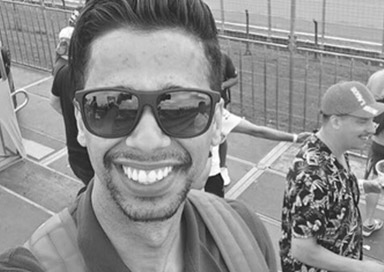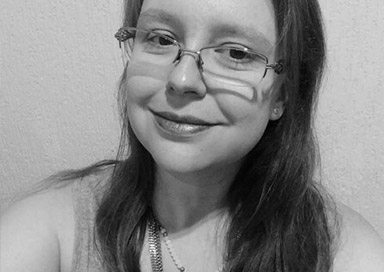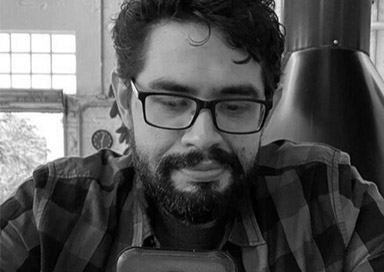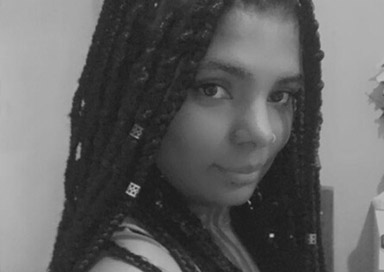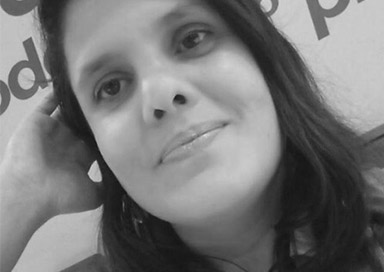This project took place during the UX - Intensive Formation Course from Mergo User Experience (55h). Under supervision of the teacher Edu Agni, we worked collaboratively in groups of 6 (click to access my colleagues LinkedIn pages):
The project starts with the following challenge:
*For context: in Brazil, to have a government job is usually synonymous with job stability, good benefits and a higher pay. Due to that, the exams are very competitive and people usually have to dedicate a long time studying in order to be approved for such jobs.
Our design process was divided in six steps:
At this stage, our objective was to understand the needs of the people involved in the problem: what they need, what they like, what they don’t like. We started with a research to understand the general context of the situation and developed a few hypothesis, to then prepare ourselves for the interviews with real users.
DESK RESEARCH:
Our first step was to search online looking for news, videos, articles, researches and statements in social media, gathering information on Civil Service Examination and on the people who take these tests. With that we collected insights to develop our hypothesis.
CSD MATRIX:
From the data we gathered in our research, our group discussed and found a consensus to divide all information in 3 categories: Certainties, Suppositions, and Doubts. This technique is called the CSD matrix, which is the Portuguese acronym for “Certezas, Suposições e Dúvidas”.
INTERVIEW SCRIPT
Having in mind the hypothesis and the doubts defined in the CSD Matrix, we developed a script with pre-written questions that would be used to interview real users, recruited by Mergo school. This script provided us with a guide to conduct the interviews, while also giving us freedom to add new questions that could appear while talking directly with the public.
INTERVIEW AND INSIGHT CARDS:
Our group was then subdivided into trios with 1 interviewer and 2 observers. While the interviewer conducted the conversation, the observers took notes in insight cards, registering the parts of the answers that could be useful to clarify our initial hypothesis and doubts, while also adding information that we had not considered at the beginning of the process. We also recorded the interviews in video and took a few photos, to be able to revisit them later.
After the research and the interviews, at this stage we tried to assess our public and define problems, what needed to be solved or created.
DEBRIEFING:
After the interviews, we reviewed our individual notes as a group and tried to find points in common between the 3 interviewed people. We then organized our discoveries in 5 blocks: Motivations, Frustrations, Routine, Background and Objectives, taking out the peculiarities that were pertinent only to one of our interviewees, and trying to find behavioral patterns between all three.
PERSONA:
With these findings in mind, we defined an User Persona: Ana Gonçalves da Costa is a 31 year old woman, mother of a 7 year old boy, that works as a management technician and lives in Carapicuíba, São Paulo. She likes to watch classes on Youtube, and uses the time she takes commuting to and from work to study. She is looking for financial stability. Her family supports her in this and she wishes to make a career in her area of interest. She was taken the test once, but was not approved; she has trouble with some math problems and doesn’t have anyone to go to in order to teach her that.
THE USER JOURNEY:
We then mapped the journey of this User Persona, from the moment she decided to try for a Civil Service job up until taking the test. Firstly, we listed the steps in this journey; then, we thought about the contact points, the activities involved in which step (read the requirements of each job, apply to the ones that were a good fit with her skills, organizing study material). After that, we tried to think of the emotions (positive and negative) involved in each step, and tried to identify opportunities that our product would have to help this person and make her experience better.
After getting to know the users and their trajectories, it was time to think on the product we would offer to this group of people. At the brainstorming stage, we tried to list the most ideas possible, to then select our priorities from them. The structure of the course defined that our project would be a mobile APP, so we started to think about its functionalities.
MVP:
We observed the mapped opportunities and selected a group of functionalities that could form an MVP (minimum viable product). We divided those in 3 categories: Organization, Study and Self-Evaluation.
ACTION PLAN BRIEFING:
With this briefing, we decided which way to move forward with the project. As a group, we decided on objectives, functionalities, differentials, target group and value proposition of our product. We decided that it would be important to have: a chat with teachers to help the students with questions they may have in the subjects of study; an area to take practice exams; an selection of content to study according to the job selected; e, specially since we had a deaf person as part of our group, it was a priority to consider that our APP would have to be accessible, with content and classes in sign language.
TASK FLOW:
At this stage, we defined the sequence of tasks the user would perform while interacting with the app: create their profile; select which examination exam they want to study for; define how much time they have available for studying; select an subject; watch video classes; access the chat with teachers; take an practice exam; share their result on social media. From this sequence, we also started to think about the visual elements that would appear on which screen: search bar, lists, filters, chat, etc).
LOW FIDELITY PROTOTYPE:
Having defined the initial functionalities, it was time to start to think in the interface itself.
We started our prototyping in paper, since this model would allow us to work more collaboratively, with more than one person designing the screens at the same time.
We designed the screens in an predefined area so that we could then photograph then and create an prototype that we could navigate on, using the Marvel App (see video).
To test our prototypes, each group recruited a real user that had already taken the test more than once but that was never approved. On testing day, we welcomed them, explained the reasoning and the objectives of this test and asked them to sign a consent form to get authorization to record the test in audio and video. In which test, one person of our group was the moderator and the rest of the group were the observers, taking notes of insights and perceptions about the interactions and difficulties of the user. We asked the participants to try to accomplish 3 tasks:
- 1. Access the app to start their studies and watch one video class on Economy;
- 2. Access the chat to ask the teacher for help;
- 3. Access the practice test for the Federal Police Examination.
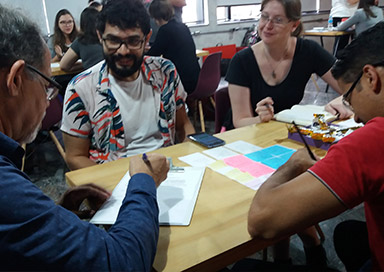
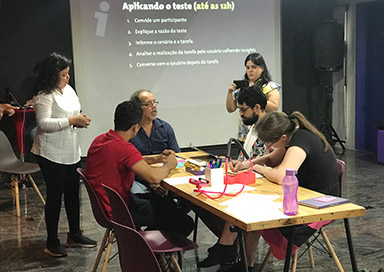
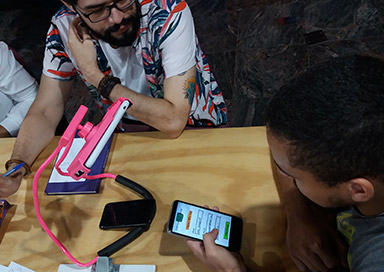
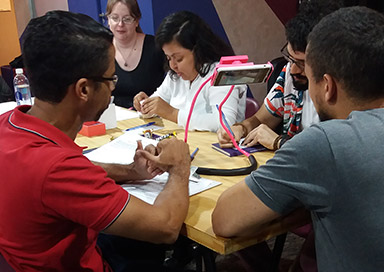
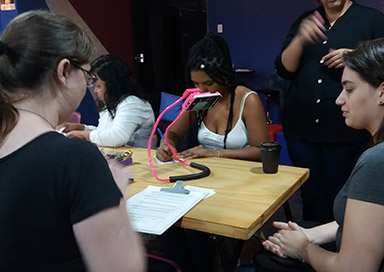
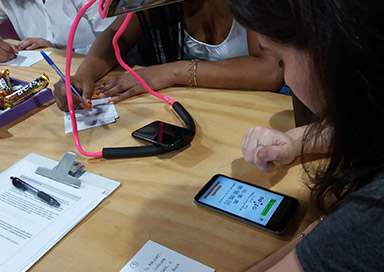
After the tests, we reviewed our notes to determine the main problems found in the app and to think about how we could solve them. We also considered the improvements suggested by the users. After that, we moved on to a medium fidelity prototype designed on Figma to make some of these alterations.
- Increase size of the text on the menu and add icons to it
- Include the word “Close” on the label for the chat button
- Replace the performance graph for a checklist with the user goals
- Add auxiliar text explaining the functionality of the buttons
- Include the test requirements and calendar with the test date and other important reminders
- Add FAQ after each class to help with common problems
- Show the correct answers during the practice test, after the user selected the wrong one
On the last day of the course, we shared our discoveries with our colleagues with a Powerpoint Presentation. We had the presence of experts Ana Coli e Carolina Leslie as evaluators.

